Spots of Color for Fall
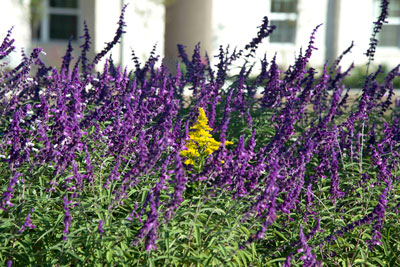
If your color beds are looking a little listless, or if you’re needing to perk up a part of your gardens for a party or event that will be coming up before long, put container color to work.
Start with a few large, decorative pots and a large bag (or two) of high-quality, loose and well-draining potting soil. Then stop by your favorite garden center and pick up a few prizes, preferably in 1- or 2-gallon pots for instant beauty.
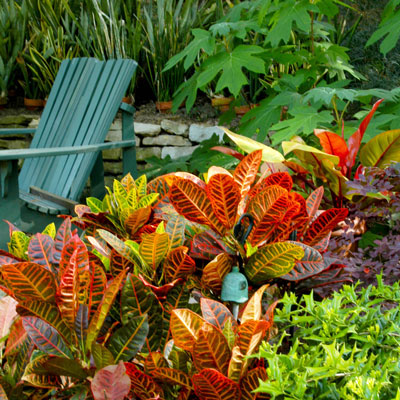
Here are some of my favorites…
I love color in containers because it gives me the flexibility to move plants around quickly. If a plant needs more sun, or if one has run its cycle and is no longer attractive, changing it out is really easy.
The possibilities are endless. I’ve grouped my choices into two basic color schemes: the rich tones of autumn (reds, yellows, oranges and rust) and the jewel-like shades of purples and lavenders. As you plant your pots you can mix or match plants into the pots. It all depends on your preferences and the sizes of the pots that you choose.
Golds, yellows, oranges and reds…
These are some of the plants I’d deem to be best in this range of colors.
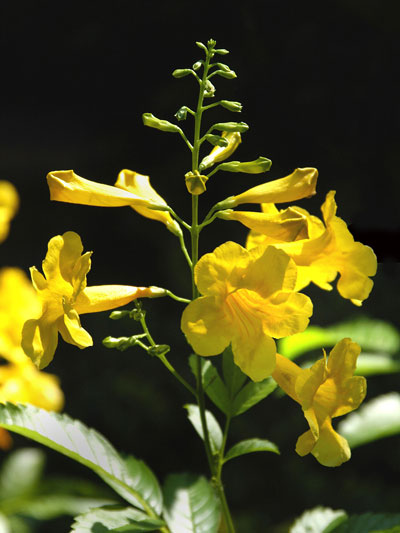
• Gold Star Esperanza. Actually a great annual in North Texas or perennial when planted in the ground in South Texas. Cheerful yellow, tubular flowers.
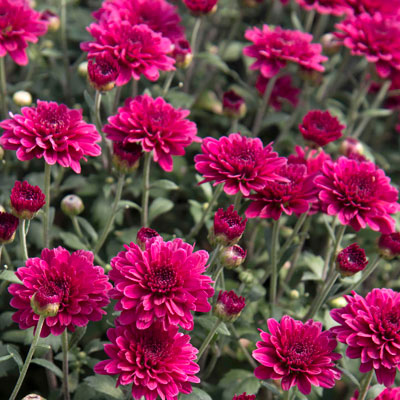
• Chrysanthemums. There is a wide range of colors and flower forms. “Garden mums” are smaller-flowering types with numerous flowers per stem. They can be planted into the ground after first frost kills the tops back.
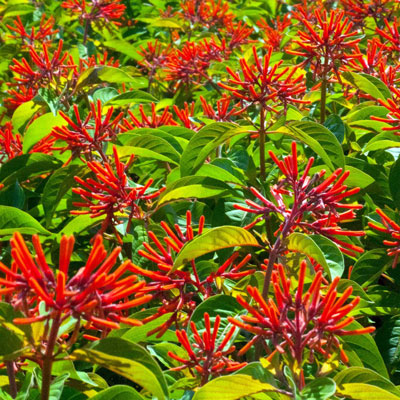
• Firebush. Native to Southwest Texas, this is a fabulous plant for fall color of both foliage and flowers. Migrating hummingbirds love it as well.
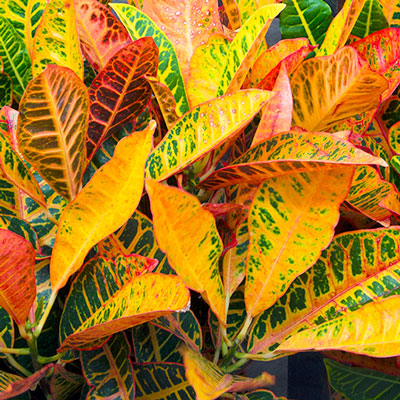
• Crotons. These plants have come of age. They’ve been enthusiastically accepted into the landscaping color community. There are many different leaf color types and several different growth forms. Bring them into a greenhouse or sunroom for winter.
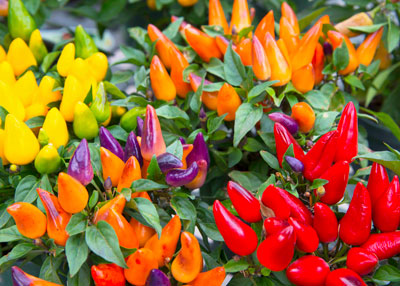
• Ornamental peppers. The fruit starts out green, but as it ripens it changes to shades of red, orange, yellow and even purple. Most types are very hot, but you’re not planting them to eat. They’re too pretty for that.
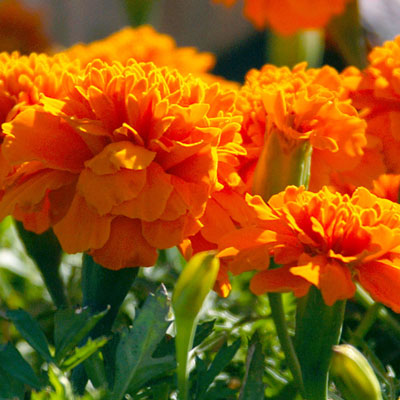
• Marigolds and zinnias. If you plant these as they’re just starting to show color now, you’ll get many weeks of nice blooms leading up to the first frost. And you won’t get any spider mites on the marigolds like you do in late spring. Colors will be much richer than the same plants grown in the spring.
Purples and lavenders…
These are some of the plants I’d deem to be best in this range of colors.
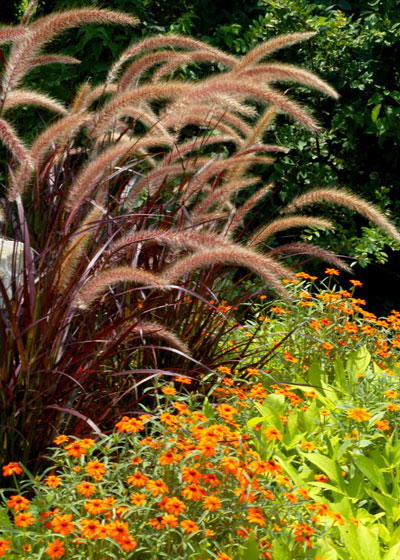
• Purple fountaingrass. If you need a “thriller” tall plant for a large decorative pot, and if purple is your featured color, this is a great choice. Surround it with a couple of these plants below and you’ll have a work of art.
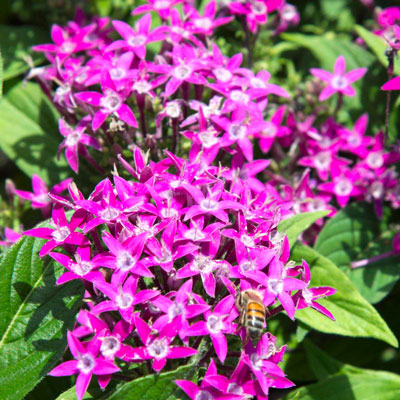
• Pentas. You can probably still find some very nice plants growing in 1-gallon pots in nurseries. Their clusters of blossoms are elegant, and they blend well with other plants mentioned.
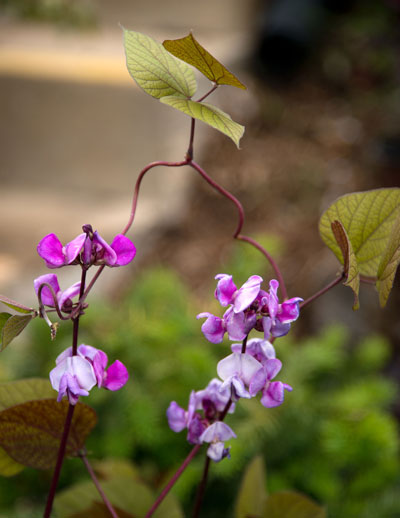
• Hyacinth bean. This beautiful vine was grown by Thomas Jefferson and now we’re growing it, too. The leaves are purplish-green all summer, but as the weather cools, the leaves, flowers and pods are all rich Aggie maroon. If you decide to grow this one you’ll have to find one growing on a stake in a nursery pot and get it planted on a trellis or other support right away.
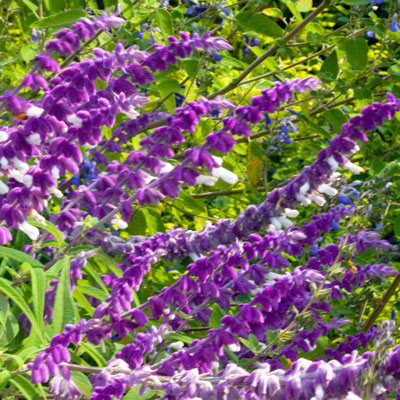
• Mexican bush salvia. The boldest of the perennial salvias, this grows to 30-40 inches tall if not tip-pruned in May to encourage side branching. It blooms in shades of purplish-blue for a couple of months in the fall. Butterflies and hummingbirds love it, and you will, too.
• Chrysanthemums. As mentioned above, these come in a variety of growth forms and colors. Purples blend well with so many other plants that we grow.
• Ornamental peppers. This is another plant that comes in coats of many colors. Purple just happens to be one of them. As mentioned, most types are very hot, but you’ll want to enjoy them visually instead anyway.
